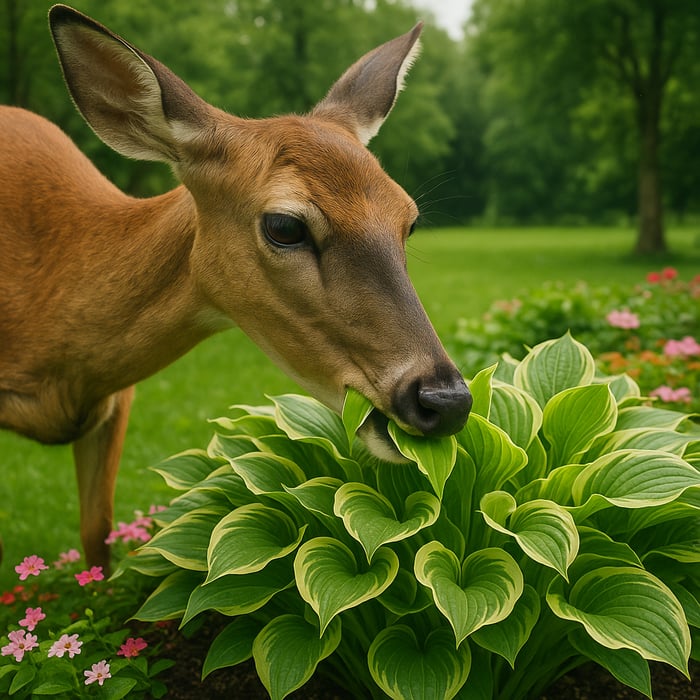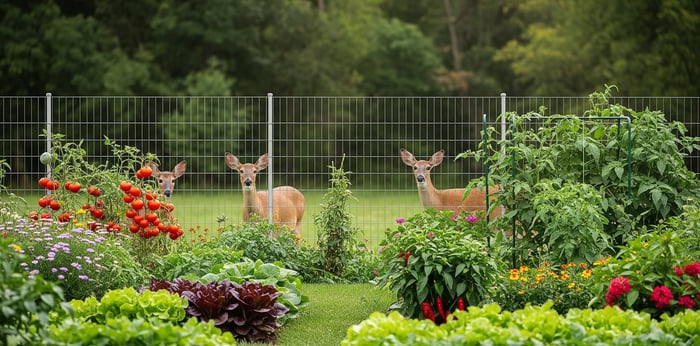
Healing Through Gardening: The Therapeutic Benefits for Veterans and Seniors
When it comes to physical activities, many veterans and seniors struggle to find a hobby they can enjoy without risking injury. Over 5.4 million veterans received compensation for a service-related disability in 2022, according to the United States Census Bureau. In addition, many veterans have mental health conditions that accompany their physical conditions. In 2022, a survey of U.S. veterans found that 67% had PTSD and 56% had depression.
Likewise, seniors can also be susceptible to developing a mental health condition with age. Over 14% of adults have a mental health condition, with the most common being anxiety and depression. Because of these challenges, activities that support both physical and emotional well-being are especially valuable — if they can be safely and easily enjoyed. Fortunately, there’s one activity that checks all the boxes for both veterans and seniors: gardening.
Gardening is more than just trimming the bushes or a way to pass the time. It’s a restorative activity that nurtures both body and mind. Whether tending to a small container garden on a patio or working in a shared community plot, the act of growing plants can cultivate a deep sense of purpose, connection, and peace.
How Gardening Helps — And Why That Matters
One of the most immediate effects of gardening is its ability to lower cortisol, the hormone associated with stress. Just being outdoors in a green space can begin to shift the body’s stress response. But gardening goes a step further. Whether you're digging in the soil, planting new crops, or simply walking around the yard to water, these everyday gardening tasks get your body moving and trigger endorphin release — a natural way to ease anxiety and depression.
Unlike other intense exercise routines, gardening is low-impact, and you can adapt it to your range of abilities. The act of tending a garden also taps into powerful sensory experiences. Touching soil, smelling herbs and flowers, and observing plant growth through the seasons fosters a grounded, mindful state. Essentially, these actions allow veterans and seniors to participate in sensory interventions. Sensory interventions provide a tangible experience that helps veterans and seniors focus on the present rather than memories that may be causing PTSD or depression.
Natural Routines for People Who Need Structure
More than anything, gardening can provide a routine for those who need it the most. From daily watering and pest checks to spring weeding and fall harvesting, gardening requires consistency — even in the smallest tasks. Over time, these small, repeated actions can help someone reestablish a sense of control over their environment and daily life — something that can be especially powerful for veterans transitioning to civilian routines or seniors adapting to life changes.
Why Does Gardening Benefit Veterans and Seniors?
Most people turn to gardening for various benefits. Maybe they want to save money on produce. Maybe they want to connect with nature. Maybe they want to express creativity in their backyard landscapes. Veterans and seniors, however, stand to benefit the most, especially if they’re coping with a physical or mental condition.
Veterans and Trauma Survivors
For veterans coping with PTSD and trauma, talk therapy isn’t always enough. For some, there may even be a stigma against seeking help with traditional therapy, or they may not have access to it. While all veterans have access to VA care, which includes mental health services, they may still face out-of-pocket costs — such as co-pays or travel expenses — which can be difficult to afford. According to the U.S. Department of Health and Human Services, over 38% of veterans were worried about medical bills.
Gardening, however, can be a cost-effective alternative for veterans who may not have the financial resources for traditional mental health therapies. When used to treat PTSD, gardening has been shown to improve not only physical health outcomes like reducing obesity, but it can also improve veterans’ social and mental health. PTSD programs that used horticulture therapy found that those who gardened were more likely to self-report better moods and reduced feelings of isolation due to increased social interactions.
The repetitive nature of garden tasks, the predictability of plant life cycles, and the calming environment help foster a feeling of control and calm. For trauma survivors, these experiences are vital in rebuilding trust, both in themselves and their surroundings.
Seniors and People with Cognitive Changes
For many seniors, any hobby they take up is an effort to stay fit and ward off any mental decline they may experience through life’s transitions. Countless studies indicate that gardening not only improves cognitive ability but also decreases the chances of developing conditions like dementia and Alzheimer’s. This is because gardening can help develop proteins that play an essential role in the survival of neurons that are associated with cognitive functioning.
Other evidence indicates that simply being in nature and healing is an evolutionary trait, as it’s considered genetically favorable to surround yourself in an environment with a wide array of biodiversity.
Unlike other hobbies, seniors can adapt to gardening based on their ability level. For example, if they’re unable to bend over or kneel on the ground to dig in the soil, they can use raised beds for easy access or buy tools like an extended hoe to help agitate the soil.
Programs That Use Gardening to Heal
Starting a gardening hobby on your own can feel daunting. However, as a senior or veteran, there are several community programs that can help you get started.
VA Gardening Therapy Programs
While many VA centers and hospitals focus on physical and mental health, many of them take a holistic approach and offer horticulture therapy through communal gardening programs. For example, Illinois, Kansas, and California all have VA gardening programs that allow veterans coping with PTSD, depression, and anxiety to bond over gardening.
If you’re a veteran and you’re not sure if your local VA clinic has a gardening therapy program, call them. Even if one isn’t available yet, they may be able to connect you with similar opportunities or help explore the possibility of starting one.
Residential or Assisted Living Communities
In residential and assisted living communities, therapeutic gardens have become an essential tool for enriching the lives of older adults. Communities build these gardens to be accessible, calming, and engaging, offering residents more than just a view of nature. They provide a hands-on way to stay mentally and emotionally active, which is especially important for seniors facing isolation, memory loss, or declining mobility.
Gardening programs in these settings also promote social interaction. Whether joining a group to plant vegetables or chatting with a neighbor while pruning, residents form meaningful connections that reduce feelings of loneliness. These quiet, joyful moments spent in the garden can significantly improve mood, lower stress, and offer a daily sense of purpose, helping older adults feel more grounded and connected to the world around them.
How To Start Your Therapeutic Garden
Whether you’re joining a program to start a community garden or you’re building a garden in your backyard, these tips can help.
Pick the Right Spot
The success of a therapeutic garden starts with choosing the right location — one that’s both nurturing for plants and inviting for people. Look for a spot that receives ample sunlight, ideally four to six hours a day, especially if you're growing vegetables or sun-loving flowers. At the same time, find plenty of shade. You can do this by finding naturally occurring shade from trees nearby or with added structures like umbrellas or pergolas. Not only can this give plants a break from the sun when needed, but it can also give you a space to cool off during the day.
Protection from harsh elements is also key. Choose a space shielded from strong winds, which can not only damage plants but also make the garden feel uncomfortable or unsafe. If the garden is in a public or shared space, consider areas that are slightly tucked away or bordered by hedges or fences to reduce foot traffic and preserve a sense of calm. A well-chosen location sets the tone for a peaceful, healing environment where gardeners can focus on growth, both botanical and personal. For any trees you plant, you can also utilize tree protection kits that can help stabilize trees from the elements and intruding pests.
Choose Hardy Plants That Make You Happy
One of the most rewarding parts of starting a therapeutic garden is selecting plants that bring joy and thrive with minimal fuss. Hardy, low-maintenance plants are ideal, especially for beginners or those with limited mobility or energy. Some examples of plants that work well:
Fragrant herbs for their calming scents, like lavender and rosemary;
Leafy greens, tomatoes, and squash that you can use in your meals;
Pollinator-friendly flowers like coneflowers, marigolds, or zinnias that invite butterflies and bees into the garden.
Keep in mind that some plants may attract pests like deer, rabbits, and small garden rodents like voles, so you’ll need to pick wisely.
Build a Low-Stress Gardening Routine
The goal of a therapeutic garden isn’t perfection — it’s presence. That’s why it’s crucial to create a routine that feels supportive rather than overwhelming. When starting a garden, keep these goals in mind to prevent your garden from overwhelming you:
Start small: Just 10 to 15 minutes a day of tending to your plants — watering, pruning, or simply observing — is enough to establish a consistent rhythm without feeling like a chore. These short, mindful sessions allow you to reconnect with nature and with yourself in manageable increments.
Give yourself permission to make mistakes: Not every plant will thrive, and that’s okay. Part of gardening — and healing — is learning from trial and error. A plant that doesn’t make it isn’t a failure; it’s a lesson in patience, adaptability, and acceptance. Over time, these lessons in the garden often mirror personal growth in surprising and meaningful ways.
Journal about your garden and your mood: To deepen the therapeutic impact, consider pairing your gardening routine with a reflective practice like journaling. This can help you track your emotional and gardening journey. For example, if you’re struggling with pests, a journal can help you look back and try new tactics. Likewise, you can use a journal to try new meditation practices.
If you feel at peace while gardening, or your garden becomes a haven for you, you know you’re doing it right.
Protecting Your Garden From Intruders and Pests
For those using gardening as a form of healing, few things are more discouraging than discovering that deer, rabbits, or invasive pests have upended their hard work. When a garden becomes a space of recovery, even a minor disruption can feel deeply personal, triggering feelings of helplessness, frustration, or defeat. An unexpected intrusion of pests can shatter any stability you’ve created in your garden and undermine the emotional progress made.
However, using inhumane pest control methods may defeat the purpose of a therapeutic garden. To preserve the emotional and physical purpose of your garden, establish gentle but firm boundaries. Wildlife-friendly fencing is an effective way to do this without harming local wildlife or creating an eyesore. Thoughtfully designed enclosures help protect the garden from four-legged visitors while maintaining the tranquil, open-air atmosphere that makes therapeutic gardening so powerful.
If you’re unsure of where to place the fencing, you can also invest in plastic solutions, which are easy to install and flexible enough that you can move them whenever necessary.
No matter what choices you make in your garden, you’ll soon find that planting fresh herbs, plentiful crops, and colorful blooms provides a sense of purpose in your routine from which you can benefit. For veterans and seniors, especially those coping with trauma, grief, or life transitions, the garden can become a sanctuary. It's a place where structure is gentle, failure is part of the process, and growth — both botanical and personal — is always possible.
With a bit of planning, patience, and protection, anyone can create a therapeutic garden space. Start small. Stay present. Let the garden do what it does best — grow hope, one day at a time.
Mental Health and Gardening Resources
If you want to start a garden and want more information, check out these resources:
Gardening Resources
American Horticultural Therapy Association (AHTA): AHTA is the leading organization for horticultural therapy in the U.S., offering professional standards, training programs, and a directory of therapists who specialize in healing through gardening.
USDA Community Supported Agriculture (CSA): This resource has a list of basic guides on how to start your own community garden.
Extension Foundation — Find a Cooperative Extension in Your State: To find a university that cooperates with the public in building community gardens, utilize this search tool.
Mental Health Resources
NAMI – National Alliance on Mental Illness: NAMI offers peer-led support groups, local chapters, and resources for anyone experiencing mental health challenges, including veterans and seniors.
U.S. Department of Veterans Affairs (VA) – Mental Health Services: Many VA medical centers provide horticultural therapy and garden-based recovery programs. Ask your VA healthcare provider or social worker about local offerings.
Gardens for Health: This organization supports trauma recovery through garden-based care.
Practical Tools
Deerbusters Fencing Systems: Offers wildlife-friendly, reliable fencing to keep therapeutic gardens protected from deer and larger animals. Ideal for backyard gardens and community spaces.
GrowVeg: An app that helps you track planting dates and your garden’s progress.



